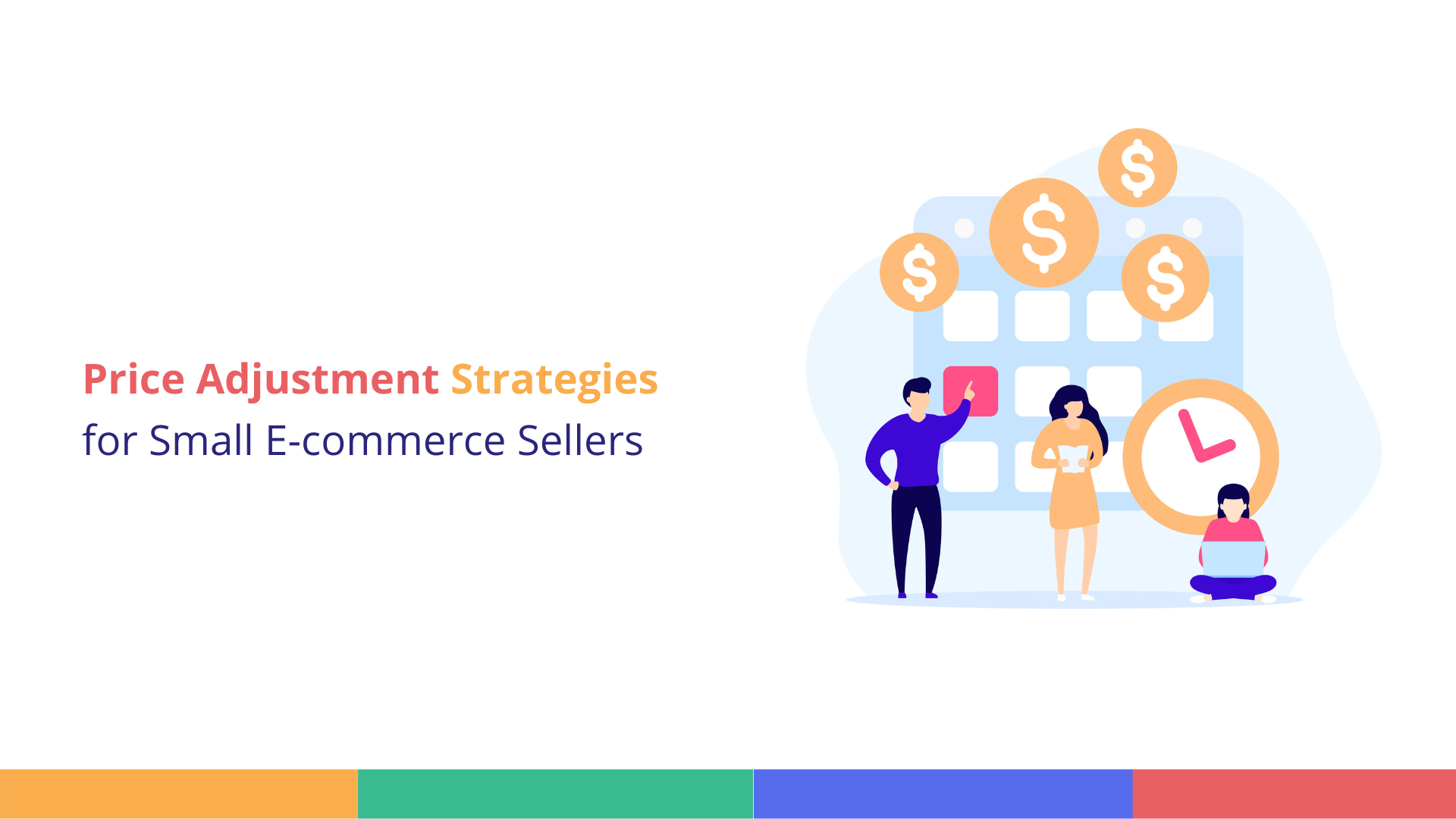The idea of constantly adjusting prices to maximize profits might sound overwhelming, especially when you’re already juggling multiple responsibilities.
Considering that small sellers work mostly individually and they don’t have enough time for additional tasks, the question is: Is it worthwhile?
However, with the right approach and tools, it can be a game-changer for businesses, helping you stay competitive and increase your bottom line. We have already explained how effective product listings attract customers. To know more about product listing, this 4-minute read can help you:
Effective E-commerce Product Listings: 10 Winning Strategies (salesoperator.net)
Pricing adjustment depends on demand and competition and can help extract more profit from existing inventory.
Now, let’s explore various types of price adjustment strategies that can be particularly beneficial for small ecommerce sellers like yourself. We’ll focus on practical, manageable approaches that can be implemented without causing undue stress or requiring constant attention.
Time-based pricing is a great place to start for small sellers. This strategy involves adjusting your prices based on specific time periods to capitalize on peak demand and attract customers during slower times.
Know about Pricing Strategies for Saller, Read Blog: A GUIDE TO MULTI-CHANNEL PRICING STRATEGY FOR SELLERS IN 2024.
Think about your business’s natural cycles. Do you sell products that are more popular during certain seasons? Or perhaps you notice that sales tend to pick up on weekends?
By aligning your pricing with these patterns, you can maximize your profits during high-demand periods and use attractive pricing to boost sales during slower times. The beauty of time-based pricing is that it can be set up in advance.
Many e-commerce platforms offer scheduling tools that allow you to pre-set price changes, meaning you can plan your pricing strategy for the entire year in just a few sessions.
Moving on to demand-based pricing, this strategy involves offering discounts based on factors like inventory levels, sales velocity, or time since the last purchase.
For small sellers, this approach can be particularly useful in managing stock efficiently and stimulating sales when needed. You don’t need complex real-time algorithms to implement this. Instead, consider setting up simple rules.
For example, if a product hasn’t sold in 30 days, automatically apply a 10% discount. Or if your inventory for a particular item is running low, increase the price slightly to slow down sales and avoid stockouts. Many e-commerce tools can automate these processes, allowing you to set the rules once and let the system handle the rest.
Competitor-based pricing is another strategy that small sellers can leverage effectively. The key here is not to constantly match your competitors’ prices, which can be time-consuming and potentially unprofitable.
Instead, use competitor pricing as a benchmark to position your products strategically. You can price slightly higher and market your products as premium options, or price lower to attract bargain-hunters.
This approach allows you to carve out a niche in the market without the need for constant price adjustments. There are tools available that can monitor competitor prices and alert you to significant changes, allowing you to make informed decisions about your pricing strategy without constant vigilance. You can think of using certain tools like Keepa (for Amazon) and PriceGrabber.
Customer segment-based pricing can be a powerful tool for small e-commerce sellers looking to build loyalty and attract new business. This strategy involves offering different prices to various customer groups, such as loyal customers or first-time buyers.
For instance, you might offer a discount to first-time buyers to encourage them to try your products or provide exclusive deals to repeat customers to reward their loyalty.
While this might sound complex, many e-commerce platforms offer features that allow you to easily set up customer groups and apply different pricing rules to each.
By segmenting your customers and tailoring your pricing, you can optimize revenue from different customer types without the need for constant manual adjustments.
Lastly, let’s talk about bundle pricing. This strategy involves creating product bundles to increase average order value and move inventory more effectively.
For small sellers, this can be an excellent way to boost sales and provide added value to customers without necessarily lowering individual product prices. You might bundle complementary products together, or offer a discount when customers buy multiple items from the same category.
The key is to create bundles that make sense for your customers and your inventory needs. Many e-commerce platforms allow you to set up bundle offers easily, and some even offer the ability to create bundles based on inventory levels or sales data.
Implementing these pricing strategies doesn’t have to be a full-time job. The key is to leverage technology and automation to do much of the heavy lifting for you. Many e-commerce platforms and third-party tools offer features that can help you implement these strategies with minimal ongoing effort.
For example, platforms like Shopify, WooCommerce, and BigCommerce offer apps or extensions that can handle time-based pricing, automated discounts based on inventory levels, and bundle creation. For competitor price monitoring, tools like Prisync or Competera can provide valuable insights without requiring constant attention.
Remember, the goal is not to be constantly tweaking prices, but to set up smart, automated systems that adjust prices based on the rules you define. Start small – perhaps implement one or two of these strategies to begin with. Monitor the results and adjust your approach as needed.
Over time, you’ll develop the right pricing strategy that works for your business, helping you maximize profits and stay competitive without adding undue stress to your already busy schedule.
In conclusion, price adjustment or optimization doesn’t have to be overwhelming for small e-commerce sellers. By focusing on manageable, automated strategies like time-based pricing, simple demand-based rules, strategic competitor positioning, customer segmentation, and smart bundling, you can reap the benefits of price optimization without constant hands-on effort. The key is to choose the right tools, set up your systems thoughtfully, and let technology do the work for you. With this approach, you can grow your business with ease.




